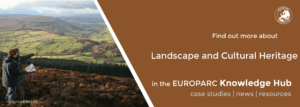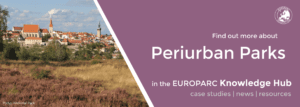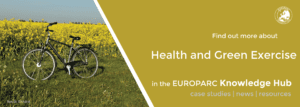Landscape design for people and biodiversity: a case from a post-mining area
Designing landscapes, Hoge Kempen National Park, BE - Source: Johan Van Den Bosch presentation
During the Conference 2019 in Latvia, EUROPARC held a number of workshops to discuss diverse topics relevant for Protected Areas management. In case you have not attended, or want to read about their outcomes, a series of online articles summarises the content of some of these workshops.
Including artefacts in Protected Areas
As an appetizer, Johan Van Den Bosch (Coordinator at Hoge Kempen National Park), explained the concept of the only National Park in Belgium, in which cultural landscapes and anthropogenic artefacts, like sand- and gravel pits, former coalmines, etc., are fully included and managed in the Protected Area. They are like a ‘matrix’ in which biodiversity is present and ecological processes take place.
Cultural landscapes and anthropogenic artefacts become a ‘matrix’ for biodiversity and ecological processes.
Visitor facilities are situated outside, and even some distance away from the National Park. In a wish to bring these facilities, so-called ‘Gateways to the National Park’, closer to the Park itself, policy-makers agreed to establish ‘grey zones’ between the gateway and the Protected Area.
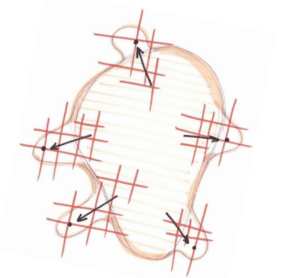
Source: Johan Van Den Bosch presentation
This resulted in a so-called expansive, rather than an invasive concept of visitor management and infrastructure. Specifically in very densely populated areas, this seems to be the only way to establish large Protected Areas and places good for people and for biodiversity. It enables to create simultaneously economic growth in tourism and new space for nature conservation.
Download the presentation: How can landscape design mimic nature to create places good for people and biodiversity?
In Europe, nature is a cultural phenomenon
…and the role of people creating nature – as well as destroying it – cannot be ignored. Our landscapes are like a clay tablet, where traces of past stories contribute to the present picture. What we do, add or remove, adds further layers into the future. Appreciation of nature connects aesthetics with cultural memory, as well as biodiversity.
It’s a great challenge for the management of Protected Areas to acknowledge the idea that
a landscape is like a biography of people living and working in it.
There is no problem with adding a new, 21st century-chapter to this biography. But make sure that there isn’t a chapter missing!
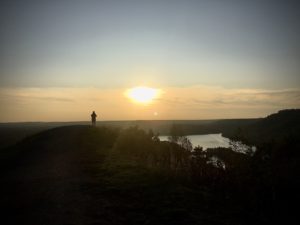
Hoge Kempen. Author: Barbara Pais
When we have the opportunity to create landscapes “from scratch”, like in post-mining areas, quarries, artificial coast-defending island, former brown-fields, natural forms and patterns result in more attractive landscapes.
But the main challenge is to kick-start ecological colonisation and succession, rather than establishing patterns and landforms by ‘gardening’.
Landscape design for people and biodiversity
Most managing agencies of Protected Areas agree that visitors who are enjoying the park are very welcome. It contributes to the public support, health care, local economy…
Unfortunately, it is sometimes seen as a ‘burden’; something to be in line with the will of policy-makers, rather than a core-issue of the management plan. It’s important to get rid of the false idea that the ecosystems and biodiversity are in a perfect state of conservation as long as people stay far away from them.
A good landscape design can create new places which are profitable for both people and biodiversity.
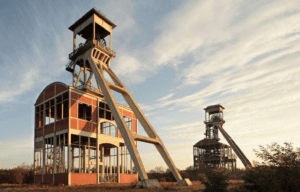
Mining towers as landscape memorials at the Hoge Kempen National Park (BE) Source: Johan Van Den Bosch presentation
While creating new habitats for endangered species is difficult, sometimes almost impossible and/or very costly, the habitat for nature-lovers is rather easy and even cheap (compared with other habitat restoration) to create. Everyone who is familiar with human behaviour knows what people going out for a nature-experience need: a viewpoint, diversity in landscapes, water ponds and sand dunes where they can play… and a pub!
When creating new habitats for nature lovers, it’s in the interest of both people and nature, to make it as natural and diverse as possible. Finally, creating places of beauty will be the most important ‘trigger’ for the broader public to become engaged in nature protection.
Give visitors a great and real intense experience, not a second hand ‘forest’ without any attractiveness.
Green exercise & outdoor sports in Periurban Parks: challenges & solutions
Source: Damien Prost-Romand presentation
During the Conference 2019 in Latvia, EUROPARC held a number of workshops to discuss diverse topics relevant to Protected Area management. In case you have not attended, or want to read about their outcomes, we summarised the content of some of these workshops in a series of online articles.
“Spending time in nature and practicing outdoor sports is good for our health”
said Dr William Bird, one of the keynote speakers EUROPARC Conference 2019, and author of “Nature and Public Health: the role of nature in improving the health of a population“.
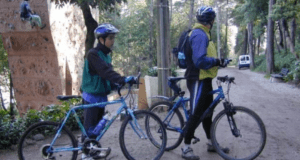
Source: Fernando Louro Alves presentation
Periurban Parks around cities offer natural landscapes where many urban dwellers come to spend time outdoors. In the past years, Periurban Parks have registered a huge increase of visitors numbers – both individuals and participants in collective sports events.
That is all good…until this increase becomes massive and starts creating problems among the users, and damage to species and their habitats.
In the last years, Periurban Parks have registered a huge increase of visitors numbers.
In order to discuss this issue, which represents one of the main current challenges for Periurban Parks, the Periurban Commission held the Workshop #5.2: How do we manage green exercise and the increase of outdoor sports in Periurban Parks?
The discussion focused on two main aspects:
- What can be done in terms of planning to better manage the increase of public use?
- What protocol can a park apply to minimise damages when organising a mass sports event?
Making green exercise compatible with biodiversity: a case study from Portugal
Download the presentation: Trails and zoning in Parque Florestal de Monsanto (Lisbon) devised to make green exercise and biodiversity as much compatible as possible
Presented by Fernando Louro Alves
In order to deal with the management of public use, Fernando insisted on the need to step back and carefully plan the park, giving special attention to mobility – especially slow mobility – and accessibility.
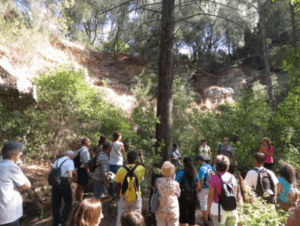
Source: Fernando Louro Alves presentation
The Monsanto Forest Park has been divided into several zones, based on different uses. For instance, the use of bikes is only allowed in one zone. However, bikers don’t always respect this regulation. At points of conflict, the Park has used conciliation participatory techniques to sort them out.
Trails, where the park wants to attract more visitors to, are clearly designed as such – they have permeable pavement, very good drainage systems and are made of native materials. These trails are beautifully designed and ranging different difficulty options.
Download the map of Parque Florestal de Monsanto
We need to step back, plan carefully and pay special attention to mobility and accessibility.
On the other hand, the park installed obstacles in trails where they intend to lower visitor numbers. Other measures, like promoting good network of public transport, reducing parking lots, implementing slow mobility etc., aim to reduce the traffic in the park’s surroundings.
The discussion in the first part of the workshop gave rise to several points:
- Bad use of parks with people not knowing it => Unconsciousness of visitors of their real impact
- The emergence of new modalities of outdoor adrenaline-like sports (down-hill descent) and engines (new type of bikes, electric bikes, scooters, etc.) => Staff is not prepared to deal with so many new activities in such short periods of time.
Limiting the negative impacts of sports events hosted by parks: a case study from France
Download the presentation: What interest does a park have in organizing or hosting sports events and what are the rules to be adopted to limit their negative impacts?
Presented by Damien Prost-Romand from the Grand Parc Miribel – Jonage in Lyon
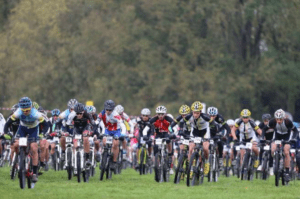
Source: Damien Prost-Romand presentation
For the Grand Parc Miribel-Jonage, the starting point is that collective sport events are good to promote physical health but also social cohesion; they bring economic benefits and create and reinforce the park’s identity. However, collective sport events might also create damage to habitats and sensitive species.
This is why the Grand Parc Miribel-Jonage, which is a Natura 2000 site, has established a protocol to regulate how mass events need to be organised and approved by the management entity.
Collective sports events promote physical health and social cohesion, but might also case damage to habitats and sensitive species.
During the discussion, many agreed on the general lack of political will and back-up of parks. Particularly, decision-makers usually:
- Do not respect the Parks’ carrying capacity limits. They always push to host the biggest run ever, biggest contest ever, etc. without paying attention to the consequences for the park.
- Do not provide enough resources for law enforcement.
Read the case study on hosting a mass event in a Natura 2000 site, the Grand Parc Miribel-Jonage.
Many of the challenges that Periurban Parks are facing, stem from the lack of understanding of the important role these spaces play for the good quality of life in cities. Acknowledging this fact, the Periurban Commission launched the position paper Periurban Parks, their place in EU policies at the EUROPARC Conference 2019.
Besides that, the commission is working on a Toolkit on Public Use Design & Management in Periurban Parks. The aim is to give practical advice on design and management measures to host different kinds of visitors, avoid conflicts among them and reduce impact on biodiversity.
If you have a case study or good practice that you would like to share with us, please submit them here. We will be happy to promote your success and inspire others!
Wilderness therapy as mental health treatment: a case study from the UK
Source: Wilderness Foundation UK website
The cost of mental health is rising exponentially across the world, overtaking the cost of heart disease. At the same time, wilderness and biodiversity are declining and we must advocate for their protection through a range of programmes that influence our general behaviours and the decisions of politicians and planners. The Wilderness Foundation UK advocates for the wild by sharing evaluated programmes that demonstrate the impact of wild places, and nature connection, on human mental well-being.
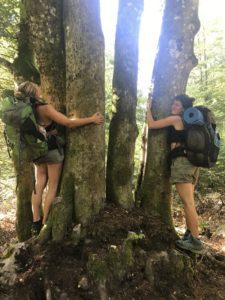
Source: Wilderness Foundation UK website
The Wilderness Foundation UK works with youth experiencing lack of education, employment, drugs and alcohol addictions, domestic violence, trauma, self harm and a range of mental health issues. They suffered with depression, anxiety, anger and violence issues, self harm and potential suicide. Many were in trouble with the police or known to social services.
The Foundation identified that many of their youth had issues relating to trauma in childhood, belonging and identity, and had no connection with wider society that was positive. Many times in their lives they had been rejected and held negative and destructive belief systems and behaviours. They had poor self respect, little respect for others or for nature.
Most had little positive contact with nature and the outdoors, and no interest in wildlife.
Read also the original case study on well-being for people and the planet through wilderness therapy and nature immersion, or another case study from Scotland on health benefits of periurban parks.
Wilderness therapy as a solution
Participants were in need of a structured programme with a strong group process and individual support.
Beneficiaries of wilderness immersions learn to care for the natural world, implementing positive behaviours towards nature such as Leave No Trace ethics, conservation volunteering and advocacy for the protection of wild places and wildlife.
The Wilderness Foundation offers a programme of a minimum of six months, including:
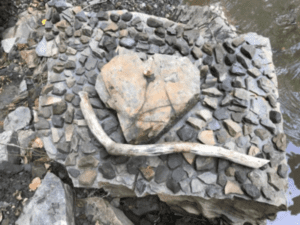
Source: Wilderness Foundation UK website.
- two wilderness therapy trails,
- monthly group work,
- social events,
- volunteering,
- training,
- and weekly mentoring.
All the steps of the programme are researched and the Foundation also provides support for the families and holds community celebrations.
Nature is the main ingredient of the programme with our facilitation and feedback session backing up their experience and embedding new belief systems. Outdoor therapy is key.
The programme established a number of partnerships that are crucial to take it forward. The Foundation works closely with the University of Essex to evaluate the work. A partner guiding company provides the health and safety expertise for the trails and adventure therapy work. Finally, they work with social services, the police, schools, and other charities to support their young clients.
Improved mental health
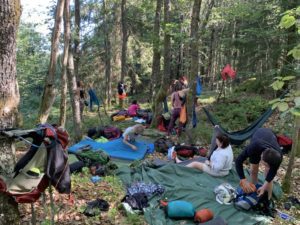
Source: Wilderness Foundation UK website
The project has a high outcome of improved mental health – such as mood, resilience, self efficacy, hopefulness linked to connection to nature. This is consistent through the years of the programme.
On average, 85% of graduates go into further education or employment. Many of the young participants have learned tools and techniques to help themselves into the future when things get hard and report that they still use these sometimes ten years after completing the course.
Nature is the greatest teacher of all and we are simply just working alongside her.
Jo Roberts, Director of the Wilderness Foundation admits that it is sometimes very hard to engage the wider family to match the changes of the young people. “We find that those on drugs or dealing drugs are the hardest to engage for the whole programme. Sometimes building a group ethic is hard before a trail brings everyone together,” explains Ms Roberts.
But most importantly, she remarks that, “by offering kindness and respect, it usually comes back to you ten fold.”
[27 Nov] EUROPARC webinar: nature conservation in a changing climate
Webinar: Nature conservation in a changing climate – Setting the scene
- Wednesday 27th November 2019
- 11:00 am CET
- Register here (it’s open and free 🙂 )
Climate is changing. Shouldn’t nature conservation adapt and rise to the challenge? This webinar series on climate change adaptation and protected area management will help protected area managers answer this question.
In this webinar…
The goal of this first session is to help participants to objectively frame the challenge that climate change adaptation represents for protected area managers.
The webinar will start with an overview of how climate change adaptation is embedded in Europe’s protected areas today. Then, by using the knowledge gained about the evolution of glaciers in the Alps, participants will learn more on what climate change actually means, concretely. To finish, the learnings from migratory birds conservation should help us better understand the challenge that climate change represents for nature conservation professionals.
Program and speakers:
- Nature conservation in a changing climate: setting the scene by Olivier de Sadeleer, EUROPARC Federation (EU)
- Climate change from the perspective of a glaciologist by Jean-Baptiste Bosson, Asters, Conservatoire d’Espaces Naturels Haute-Savoie (FR)
- Migratory birds conservation in a changing climate by Olly Watts, RSPB (UK)

Note that the webinar will offer an opportunity for everyone to interact with the speakers.
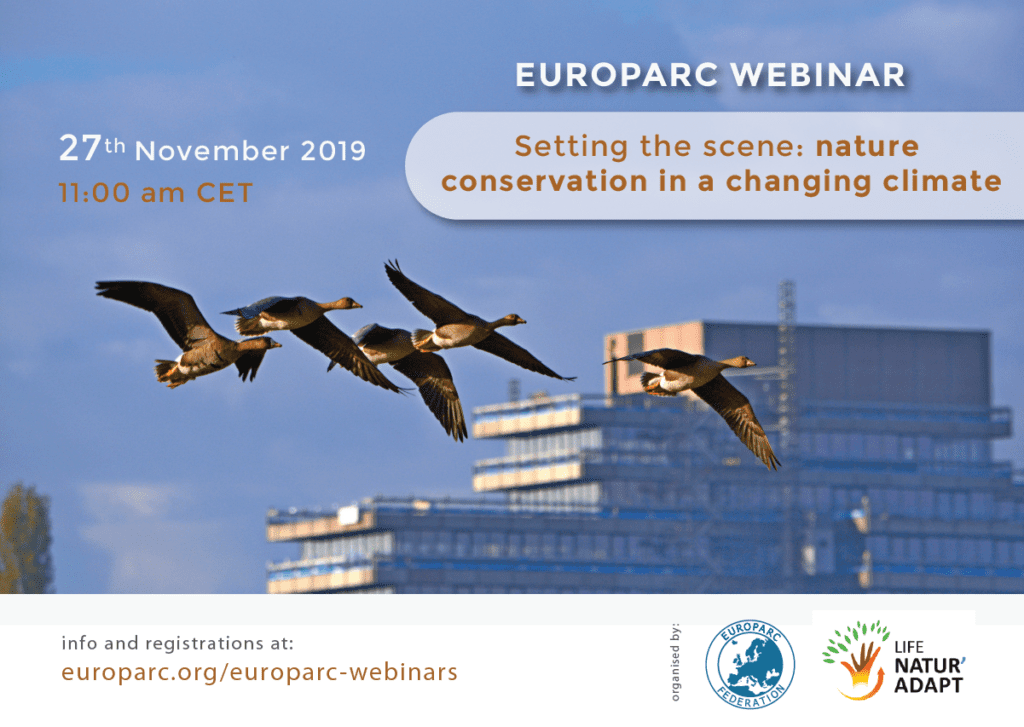
About NaturAdapt
In Europe, Réserves Naturelles de France, EUROPARC and eight partners have joined forces under a LIFE Climate Action project to turn the climate change adaptation challenge into an opportunity to innovate for nature conservation. NaturAdapt aims to initiate a transition towards adaptive management of protected areas while laying the foundation for a dynamic collective learning process.
If you wish to know more about the project, a brief description is available here.
NaturAdapt [LIFE17 CCA/FR/000089] is a 5-year project developed with the enthusiastic support of …

How to join?
Webinars are open, not only to EUROPARC members, but to everyone with an interest in Protected Areas. Participation is free but registration is necessary. Register here.
In this interactive webinar, participants will be able to join in with their own video camera, share examples from their parks and direct their questions to the invited guests.
